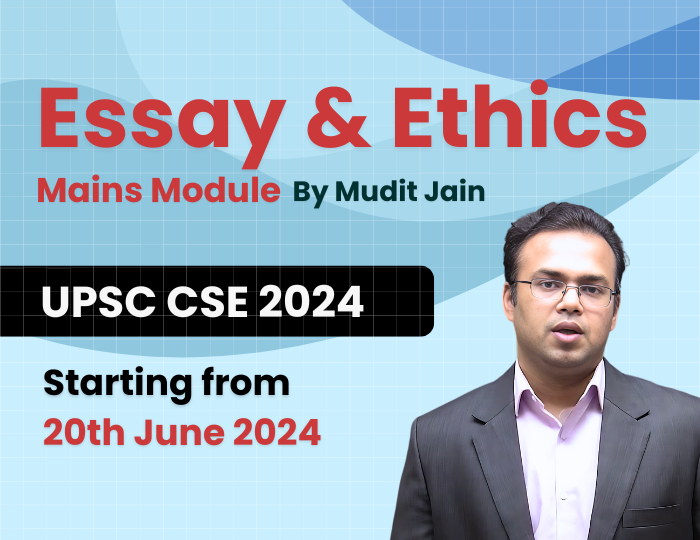Hi All,
Every year case studies make for about 120-130 marks in Ethics/GS-4 paper.
I was lucky to score more than 110 thrice in ethics paper and my case study approach had huge role in it.
Though, there is no fix format in which a case study shall be answered, you can try following:
What all to look for in a case?
As you read the case, do following:
- Recognize facts of the case.
- Recognize various stakeholders.
- Recognize the moral issue / dilemma / ethical dilemma. Is there a conflict (personal, interpersonal, or institutional) or a question that arises either at the level of thought or of feeling?
As you read the question, mark in question paper, various actors and dilemmas. This helps in saving time as you won’t have to search for same again while writing answer.
Identify and evaluate alternatives:
- What alternative actions are available?
- Evaluate the alternative actions from various moral points of view.
- Which alternative best protects the moral rights of individuals?
- Which alternative best promotes the common good?
- Which alternative would lead to the best overall consequences.
- Which alternative would help one develop and maintain a virtuous state of character (e.g., be a person of courage or compassion)?
Decision:
- Make decision.
- Consider your action in retrospect. In retrospect, was the action—and its results for others as well as your own moral character—the best action?
Join Decode Civils Telegram Group For Free UPSC CSE Guidance From Mudit Jain, IRS CSE 2017 (Ex-IPS CSE 2014 & 2015).
Decode Civils Group Telegram Link: https://t.me/decodecivilsgroup
- Decode Ethics 2nd Edition Sample Chapter
- UPSC 2019 Ethics Paper Detailed Question Sources And Answer Content
- UPPSC 2018 Mains Ethics Solutions
Decode Ethics Link
Decode History: World History Edition Link
Use of Ethical Principles:
- Determine the basic theoretical positions.
- Consider and discuss the differences and similarities between the basic theoretical strategies and their respective positions on the ethical issues that the case raises.
- Determine which arguments and moral principles will be used in conclusion to support your decision.
Caution: Avoid using too many philosophical jargons. It is better to stick to the terms and associated vocabulary mentioned in the syllabus.
- You must be aware of certain laws and their important provisions: For example, cases have been asked by UPSC where sexual harassment at work-place was the central theme. Now, even if you have little idea of the relevant laws e.g. The Sexual Harassment of Women at Workplace (Prevention, Prohibition and Redressal) Act, 2013 and you mention it in your answer, the impact your answer generates is much more.
Diagram:
- Draw at least one diagram in case study.
- This breaks monotony, brings innovation and edge over others.
- Flowcharts or decision charts can be drawn easily.
Conclusion:
- It is the most important part of case study.
- Conclude by mentioning various actors, dilemmas and crux of your solution.
- You literally have to impose on the examiner that you have addressed the case well. Write:
“Hence, the given solution addresses various actors and dilemmas given in the case and it is therefore a holistic solution”.
- You can also conclude using the way-forward approach.
Sample Solved Case Study from Decode Ethics Book:


Follow the mentioned method and practice at least 15 case studies accordingly.
ATB!!
Other Ethics Posts:
- GS-4 Strategy A2Z.
- Ethics PYQP Section-A Detailed Analysis.
- Uttar Pradesh PSC 2018 Mains Ethics Solutions.
- Ethics 2019 Detailed Question Sources And Answer Content.
- Ethics Paper 2019 References.
- How to read Decode Ethics Book?
- Decode Ethics Book.
- Examples for Ethics/GS-4.
- ETHICS Section-A Answer writing.
- ‘ETHICAL’ DICTIONARY.
- Ethics Case Study.




Leave a Reply